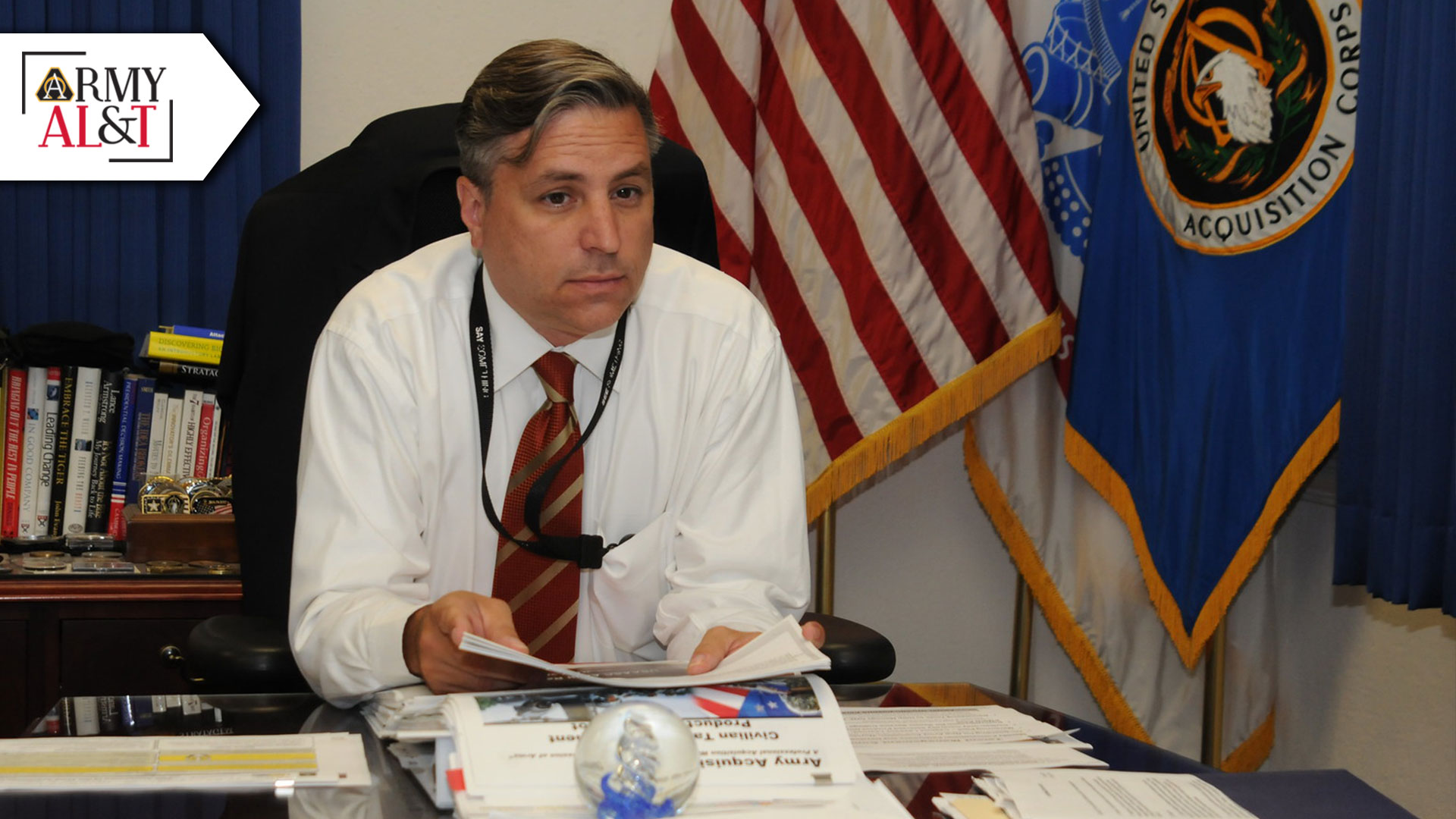
ILLUSTRIOUS CAREER: After 35 years of public service, Spisak is retiring. He looks forward to more golfing and time with his wife.
FROM THE DIRECTOR OF
ACQUISITION CAREER MANAGEMENT
CRAIG A. SPISAK
After 35 years as an Army civilian and 16 years as director of USAASC, it’s time to say goodbye.
As the saying goes: “All good things must come to an end.” And so it is with my career as an Army civilian. This will be my final column as the Director of the United States Army Acquisition Support Center (USAASC) and the (DACM). I’m retiring. After more than 35 years of public service essentially all working for the Army, it’s time to move on to the next chapter of my life.
That next chapter will include many things that I can think of and many that will come along. I will try to spend time supporting several friends who have small businesses that occasionally need help here and there. I’m going to golf and garden a lot more. I definitely plan to be more active and physically fit. I’ll do some reading for pleasure again. My wife and I will do a lot more traveling. And when we get back from those trips, I have lots of projects around the house to keep me busy.
In 1997, after 11 years working as an engineer in both the Research, Development and Engineering Centers (RDECs) and in a program manager shop—work that I truly enjoyed and that I knew I was good at—I moved to a staff position at Headquarters, Department of the Army, in the Office of the Secretary of the Army for Research Development and Acquisition, SARDA, the predecessor organization to the Office of the Assistant Secretary of the Army for Acquisition, Logistics and Technology (ASA(ALT)). That was my first assignment as a member of the Competitive Development Group, a program we still have today that is now known as the Competitive Development Group/Army Acquisition Fellowship.
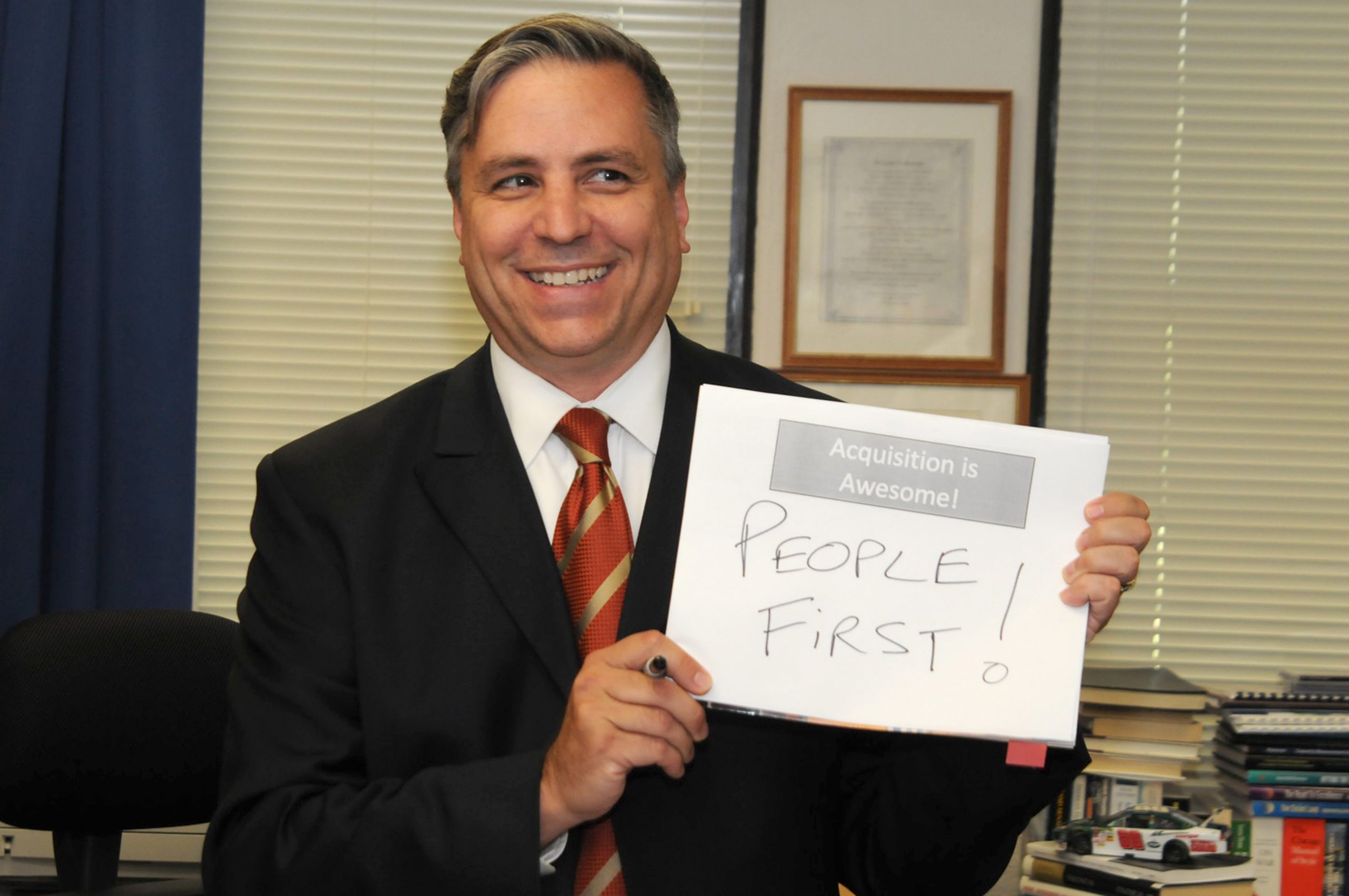
PEOPLE ABOVE ALL: Spisak believes leaders that surround themselves with the best and brightest people possible.
My motivation in leaving hard-core engineering behind and moving into staff work was a desire to pursue an opportunity to do something different and to learn at a higher level about how the Army runs. I felt it was also important to bring a field perspective to the headquarters. Staff work requires a different set of skills–I thought I was well suited to it and I wanted to give it a try.
The rewards are very different. Project engineering allows you to see the fruits of your labor. You can see the work you did in the lab, and it culminates in a product that gets tested and eventually fielded. Staff work isn’t as immediately rewarding. When you come through the staff you have to take a broader approach, both to understanding the problems you’re trying to solve and to understanding the value that you add to the total system. But you get a chance to work on many different things and at a much higher level. Gratification comes much more slowly, but more broadly. Not getting that real-time satisfaction of results isn’t for everyone.
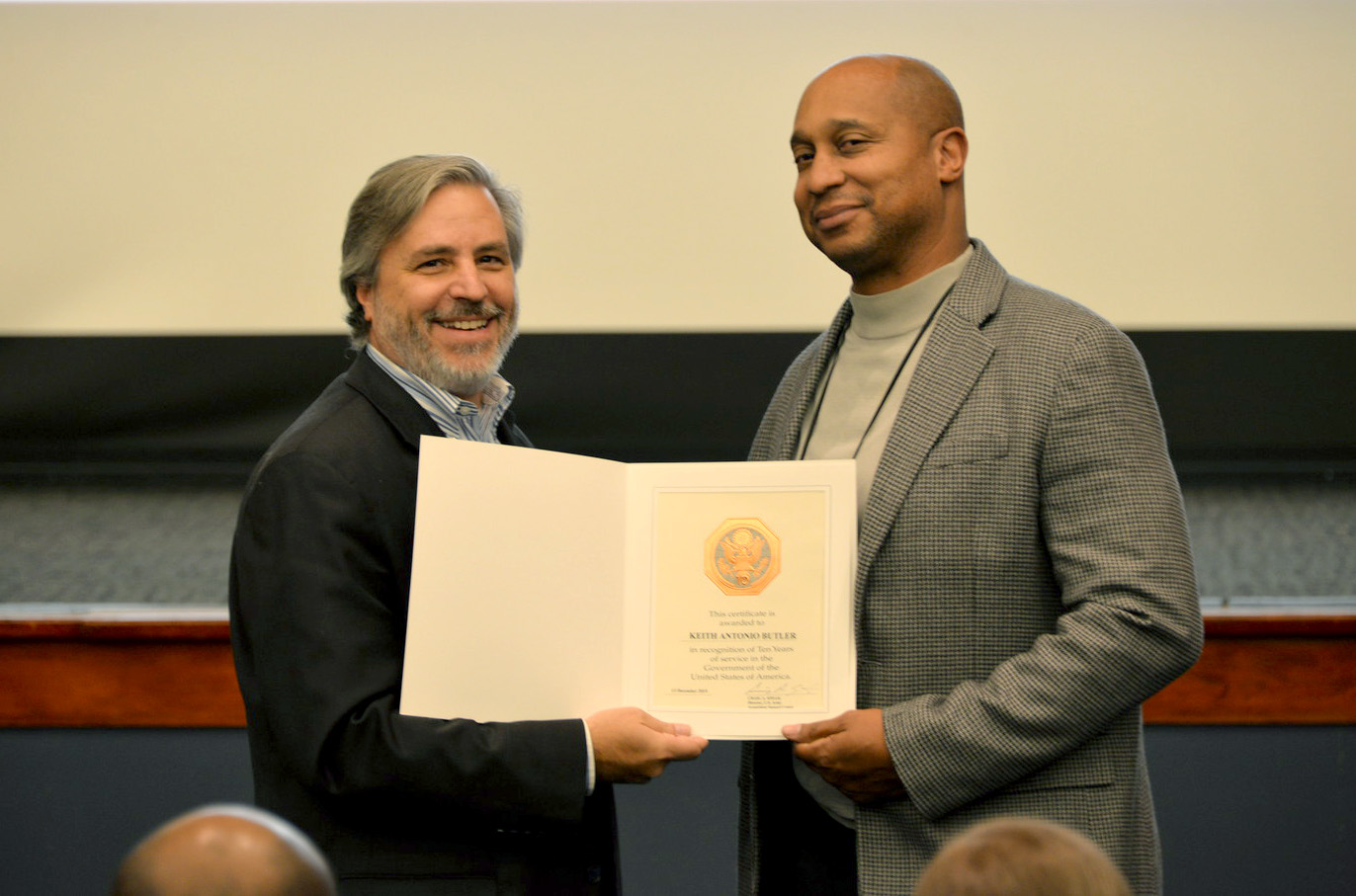
THIS IS MY AWARD POSE: Spisak presents a service award to Keith Butler, G2-6 communications branch chief at USAASC.
Our goal at the USAASC and mine as the DACM is to help the members of the Army Acquisition Workforce become the most competent, well-trained and motivated professionals possible. In my role, I’ve had a chance to influence tens of thousands of lives and careers. That’s something I look back on fondly; I’ve been able to make a difference for individual professionals and that will always be the great highlight of my career. I’ve tried to go about it in the most thoughtful way possible, recognizing that you have to weigh many more factors when you’re in the people business, which includes policies, procedures, programs and individual accomplishments. And we’ve also recognized that decisions we make can have long-lasting impacts, generating second- and third- and fourth-order effects.
It takes a long time to see the results of career development efforts. You don’t get to see how some of your efforts have made a difference until they’ve been in place for a few years. Or sometimes, it takes a few years to realize something doesn’t work the way you’d expected it would. And then you have to regroup and try again.
Here’s an example: When I became the USAASC director in 2005, we looked at how many in the workforce had completed their required Defense Acquisition Workforce Improvement Act certification training. In some Army acquisition communities the certification rates were in the high 30 percent range. That had to improve.
We realized we had to get back to basics. First and foremost, we needed to clean up our data. We introduced a number of processes and methodologies to not only ensure we were using accurate data, but to clean up the data that we had. We had to ensure we knew what we knew, not what we thought we knew. There’s an old adage: “What gets measured gets done.” It wasn’t until the team and I put a lot of focused effort on creating that measurement—and then reporting that data to the whole community in a transparent way—that things really started to change dramatically. No senior leader of any acquisition organization wants to look at that report and say, “Oh, I’m in last place.”
We went from high 30s percentages into the 60s in just a short couple of years, and now we’re well into the upper 90s. It became a point of emphasis throughout the organizations within the acquisition community that things like certifications, individual development plans, continuous learning points, senior rater potential evaluations and other tools were important to building a more professional workforce. And our partners in the acquisition community, our organizational points of contact and senior leaders were all instrumental in moving the needle of our progress. Partners and stakeholders were the critical component because the whole team knew that not every process or solution would work in every organization. Some of our partners said, “I know what you’re trying to accomplish, but here’s what’s going on in my organization. What can we do to solve this problem?” Dialogue and communication allowed us to build a coalition of the willing. When we come together as a community, we’ve been able to achieve tremendous things, from our Human Capital Strategic Plan to our training and development programs, to the establishment of the Army Acquisition Center of Excellence in Huntsville, Alabama.
In a career like mine, there are so many people who have had a direct impact on my professional, personal and organizational successes. So many supervisors and coworkers, all of the ASA(ALT)s, the principle military deputies and the program executive officers. And I’m grateful to all of them.

MANY THANKS: “I have to say thanks to all those senior leaders who have given me and the team the trust and latitude to do what’s right for the acquisition community and professionals,” Spisak said.
But I’m especially grateful to those who have worked at USAASC and in the DACM Office. I’ve always believed that if you’re ever lucky enough to get into a leadership position, you need to be smart enough and secure enough to surround yourself with the best and brightest people possible. If you bring in a smart, diverse team, you can accomplish great things. And my colleagues and teammates have been incredible!
I apologize in advance, because I know I’m going to leave out some of the names of those who have earned my special thanks. But I’d like to call out all the deputies I’ve had first. Not many people want to listen to the director’s problems, but at least my deputy (currently Col. Ralph Borja) always served as a great sounding board and really made the job easier. And in spite of me, some have gone on to become general officers and members of the Senior Executive Service. I also have to thank everyone in the front office staff roles, as they all know how difficult it is to put up with me every day. One person in particular who I need to mention by name and I still get to work with is Brian Winters. Anyone who knows him and his work ethic can’t say anything negative about him. He has been there for me for most of the ride and I can’t thank him enough. There have been a lot of great teammates along the way, both in the Army and our sister services, that have made a huge difference and always tried to put others first: Joan Sable, Larry Israel, Andy Clements, Bill Boruff, Jack Kendall, Steve Karl, Kelly Terry, Tammy Hughes, Karl Donerson, Dewight Wills and Anita Odom to name a few. And I have to say thanks to all those senior leaders who have given me and the team the trust and latitude to do what’s right for the acquisition community and professionals. Retired Lt. Gen. Joe Yakovac, who gave me my first big break, and the Hon. Claude M. Bolton Jr. are by far the most important to mention.
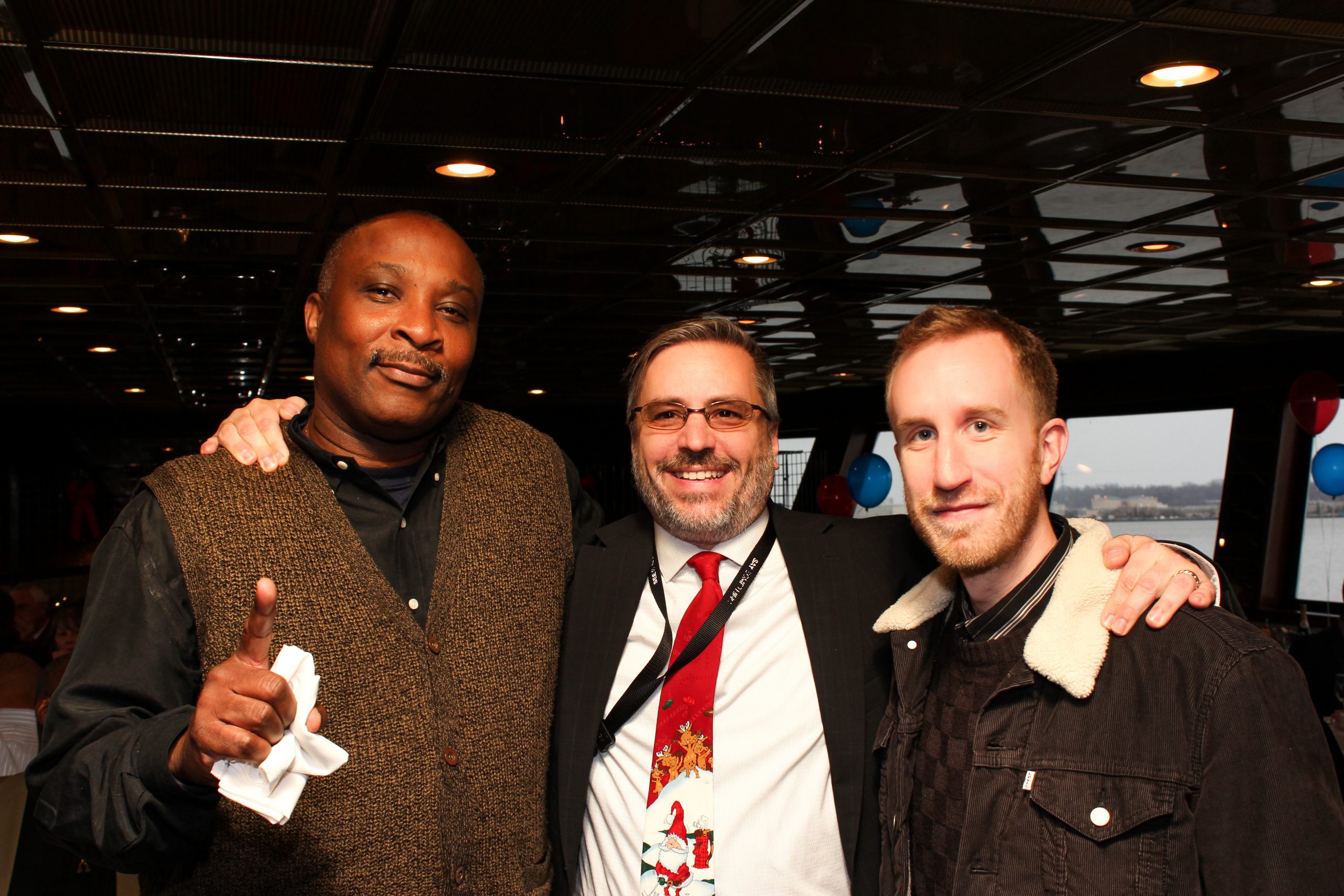
PARTY ON: Spisak poses with Dewight Wills, USAASC facilities and supply manager, left, and John Kelly, DACM senior strategic planner, at the holiday party in 2014. (Photos by USAASC)
I’ve been gratified to watch the transformation of not just the Army, but also the Army acquisition community, over the course of my career. I have seen a tremendous shift. When I started in this business it was such a compliance culture. When it came to the laws and the regulations and the policies and the rules, there was this sense of, if there’s not somewhere in there that says you’re allowed to do something, then you’re not allowed to do it. Today we’ve turned that on its head. Unless the rules say you can’t do it, then there’s an opportunity to try something creative and innovative. And if it works, great. If it doesn’t, try something else. We have used our experience and our creativity to find incredible innovative solutions of some of our most difficult problems.
While I’m quite sentimental about the idea of leaving an organization I’ve been in charge of for a long time and retiring after 35 years, I’m also quite hopeful. I see a bright future for USAASC, the DACM Office and the acquisition community, because I truly believe that people are looking at problems the way we need to.
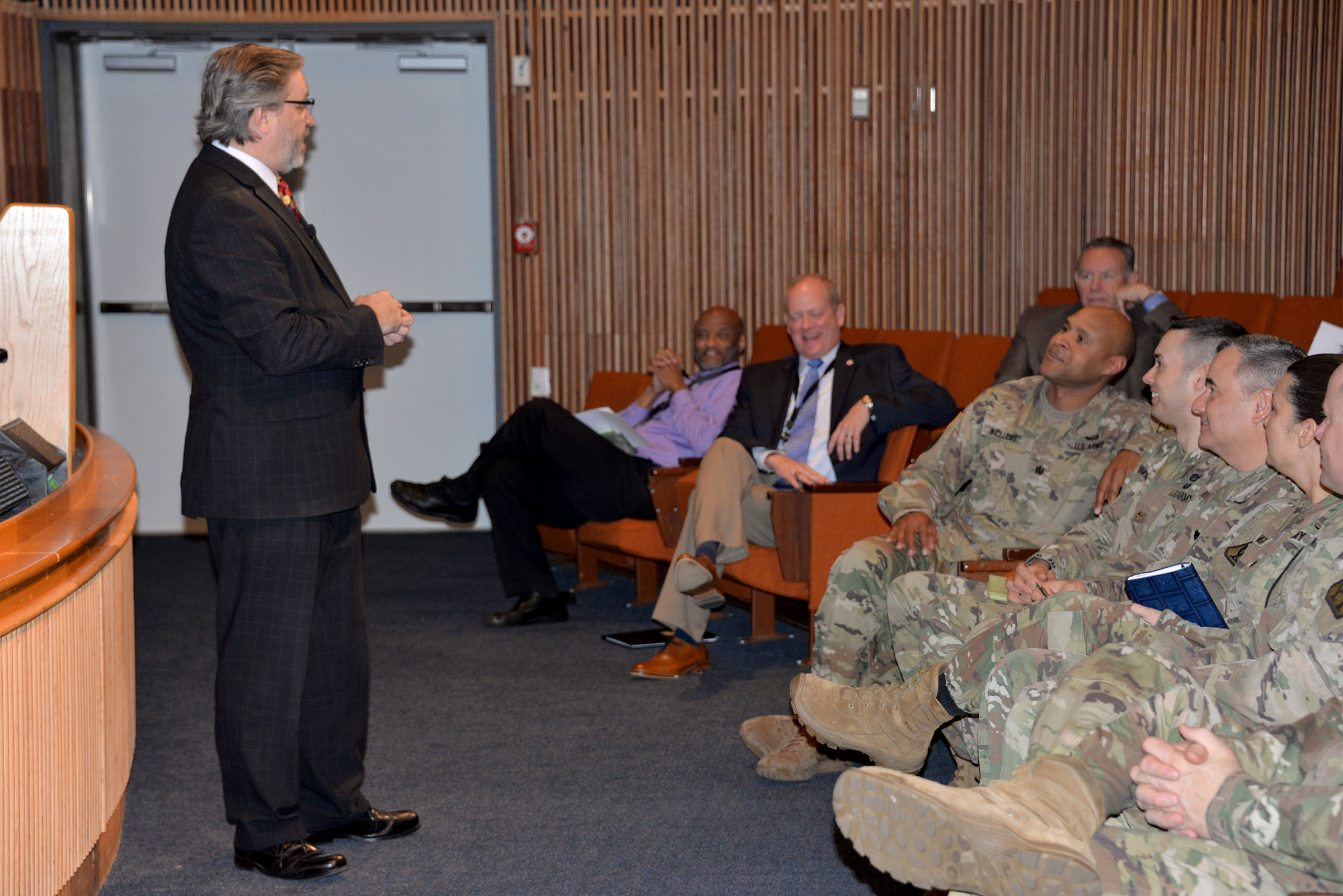
JOKING AROUND: Nelson McCouch, USAASC G2-6 division chief, center, and other members of the audience laugh at Spisak’s jokes during a town hall meeting in 2017.
We recognize this fast-changing environment with near-peer competitors. We can’t be complacent with solving problems in the same old way. We have to be cognizant that tough problems require unique and creative solutions. So while it’s going to continue to be a challenging environment, I’m very optimistic that the Army and the acquisition community are ready to work together, face the challenges and problems, and solve them and operate well in that environment. I’m also quite comfortable knowing that the organization that I’m going to leave behind, the U.S. Army Acquisition Support Center is ready to tackle those challenges. I can’t say I’ll miss the everyday work and grind, but I will miss being a part of the U.S. Army and the great men and women who I’ve had the privilege to work with along the way, so many wonderful and dedicated Soldiers, civilians and industry partners. My thanks to you all.







